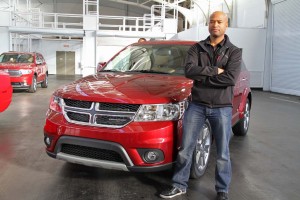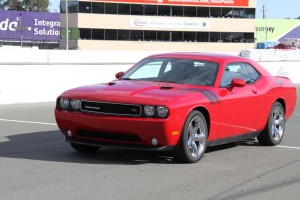For years, U.S. automakers – as well as many of their import rivals – have aimed to emulate the success of the industry’s global sales leader, Toyota. But as Chrysler struggles to rebuild, in the wake of last year’s bankruptcy, it is targeting a very different manufacturer’s formula for success: Hyundai.
In recent years, the Korean carmaker has shown it possible to reverse a reputation for poor quality while transforming itself from a bargain basement retailer into one offering great value for the money. It has been steadily gaining not just sales and market share, but increased consideration by those who, just a few years ago, wouldn’t have even dreamed of walking into a Hyundai showroom.
“Frankly, our strategy is based on what Hyundai did,” Chrysler marketing manager Bruce Velisek told TheDetroitBureau.com during a weekend preview of the new Dodge and Chrysler line-up.
With the launch of its 2011 models, the start of what Chrysler claims will be a complete revamping of its line-up under the guidance of Italian partner Fiat, the U.S. maker faces many of the same problems as Hyundai did.
While cross-town rivals General Motors and Ford now rank among the industry best, according to the latest reliability study from Consumer Reports magazine, (Click Here for more), “Chrysler is the one area of the domestic industry that hasn’t improved,” emphasized CR’s auto test chief David Champion. Numerous other studies, including the most recent Initial Quality Survey, from J.D. Power and Associates, echo that bleak assessment.
Chrysler is taking aggressive steps, according to Ralph Gilles, head of the maker’s Dodge brand, to address the quality issue. And that should be apparent to even the most casual observer checking out the maker’s 2011 models – especially in their interiors, a place where Chrysler lagged far behind the competition, noted Gilles.
The maker has switched to single piece instrument panels, for example, which not only look more refined but eliminate many of the past problems that occurred where separate pieces came together. Soft-touch foams and refined graining help gauges, switches and other controls fit together seamlessly.
“It’s not cheap,” admits Gilles, but “especially with female buyers, they sit in the car and that’s where the sale is made.”
Hyundai went through similar steps to upgrade its interiors while also putting a premium on efforts to improve what’s hidden from the eye.
“In the longer-term,” cautioned analyst Joe Phillippi, of AutoTrends Consulting, “it will depend on improving build quality and vehicle reliability.”
The steady climb in demand for Hyundai products, he noted, has kept pace with the maker’s ongoing improvements in the quality charts.
“I’m not going to say mea culpa and shrug my shoulders,” says Gilles. “We’re doing something about it.”
But he admits this something that will take Chrysler several years – and numerous owner surveys – to prove out, as was the case for Hyundai. And the one area Chrysler isn’t emulating the Korea maker is with the 10-year warranty program that helped convince consumers Hyundai’s quality push was more than just talk.
What to do in the meantime?
Under its former parent, Germany’s Daimler AG, Chrysler tried to move upmarket. But the strategy backfired. If anything, consumers saw its products as down-market offerings that required significant incentives to sell.
Backed by new CEO Sergio Marchionne, who also serves as chief executive of Fiat, Chrysler is aiming to reposition itself as a high-value brand at an affordable price. For the most part, consumers will notice price cuts on its various 2011 products — $800 less for the base Chrysler 200, for example, compared to the outgoing Sebring sedan.
(Get a first look at the 2011 Chrysler 200 with this review. Click Here.)
But in years past, such discounting likely would have been accompanied by content-stripping — the use of cheaper components and fewer standard features. Like Hyundai, Chrysler is going the other direction, and not just in terms of interior refinement.
Take the 2011 Chrysler Town & Country minivan. It will offer an array of advanced safety technology, some previously found on luxury cars, like the BMW 7-Series, as standard equipment. That includes Blind Spot Detection, a backup camera and a cross-traffic alert system that uses radar to watch for ongoing vehicles while backing out of a parking spot.
The story repeats throughout the new Chrysler line-up and even on the few vehicles where prices increase, the maker is loading up content to offset the impact. With the 2011 Dodge Charger, for example, the base price rises $100, but the sporty sedan gets $2,000 in new features – along with 114 more horsepower and an extra two miles per gallon on the highway.
“We’re going to give you more for less,” said marketing executive Velisek – and hope that this high-value formula will convince otherwise skeptical buyers to visit Chrysler showrooms.
Analyst Phillippi thinks it may make a difference, “Given Hyundai’s success” with a similar formula. “I think it’s a good strategy,” he adds, in an increasingly tough market environment in which “there is going to be an ongoing battle for market share.”


